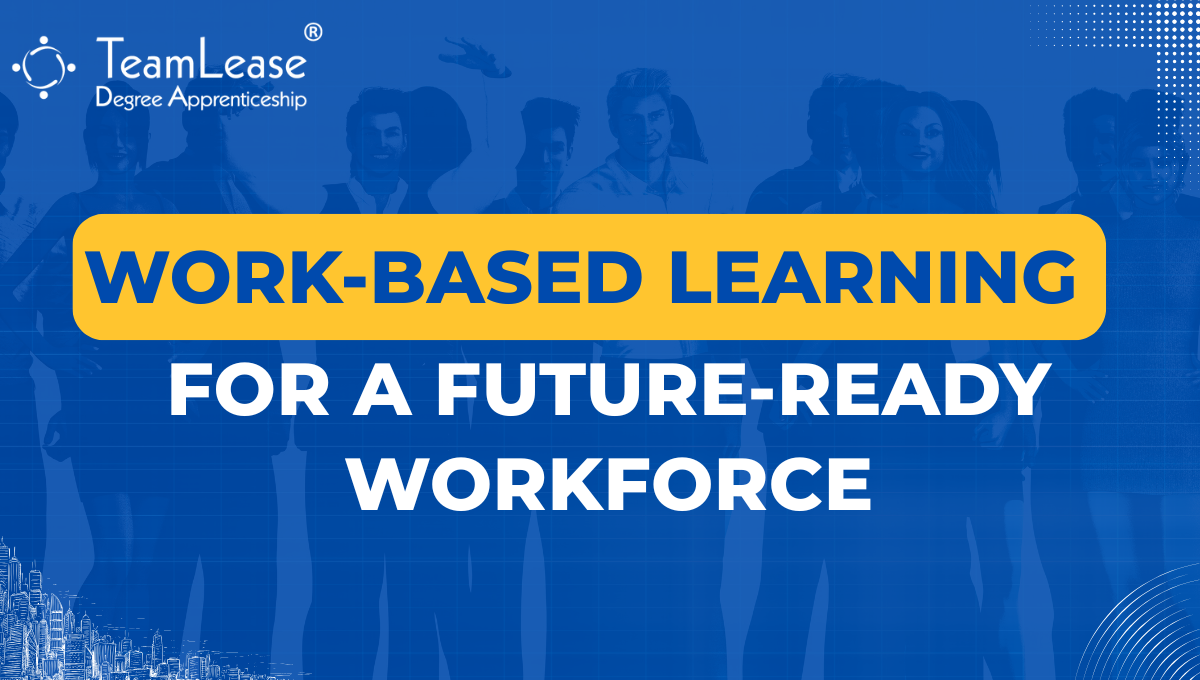It is said ‘Change is the only constant’ and this is especially true of the modern workplace which is in a state of continuous flux due to numerous socio-economic factors. This dynamic workplace is emerging as a new playing field for CHROs which comes with its own advantages as well as trepidations.
The advantages of this new order in the world of work revolve around having the opportunity to identify, train and cultivate a workforce that can deliver results and is with you for the long haul thereby minimizing the recurrent challenges of attrition. However, the challenge lies in figuring out how to go about bringing about this transformation.
Teamlease’s latest research on the ‘Skills Strategies for a Strong, Sustainable and Balanced World of Work’ is an attempt to create a comprehensive guide for CHROs to understand how a strong skill development strategy can simultaneously create value for the business, the workforce, and society. It also includes a self-assessment questionnaire that will help organizations to assess their skill strategy and provide support in designing a comprehensive plan for the future skill-development program for the organization.
The rapid developments and advancements in technology and labor market dynamics have made upskilling initiatives essential for organizations as there is a growing global talent crunch. Therefore, it has become imperative for organizations to take charge of the situation and focus on inculcating the skills they need rather than trying to hire new talent. In fact, the National Employability Report for Engineering, 2019, highlights that nearly 80% of Indian engineers do not possess the skills required to meet the demands of employers. In such a scenario the onus of training and skill development lies on the employer. Research conducted by the World Economic Forum further corroborates this view with projections that an investment in upskilling could potentially boost India's economy by $570bn by adding 2.3 million jobs by 2030.
CHROs can rely on the following Actions Points for CHROs to implement a long-term strategy for workforce planning within their organization.
1. Workforce analysis: Assess the current skill level and capabilities of the employees
2. Workforce mapping: Obtain accurate and relevant information about the workforce and their growth potential
3. Workforce forecasting: Understand the changes that are likely to take place in the nature of work in the future in response to socio-economic and technological developments in the market
4. Assess skill gaps: Create a process to periodically evaluate employees and their skill levels to ensure that they correspond with the needs of the business
5. Conduct a learning-needs assessment: Identify the skills needed and the extent of the skills gap, assess the capabilities of current training and learning offerings and recalibrate if required
6. Determine target talent: Identify the ideal employees that can successfully undergo the upskilling initiative
7. Develop a learning strategy: Create a learning roadmap entailed strategy to upskill the workforce which complements the recruitment strategy to ensure that the organization invests in people who can be groomed to meet the skilling needs of the future.
These steps will go a long way in helping CHROs to design a training and development program that is inclusive and can be implemented across the various levels of the organization. They can implement a mix of long-term and short-term skill-development strategies that cater to the immediate and long-term needs of the organization. For instance, organizations can look at adopting a mix of Just-in-time training, Apprenticeship programs, and Degree Apprenticeship programs targeted towards different levels of employees based on the needs of the business as well as their aptitude and abilities.
Apprenticeships programs can be implemented on a large scale for junior-level executives/workforce. These programs are mutually beneficial as apprentices will get an opportunity to learn new skills while being paid a wage and employers can retain and nurture potential talent pool to meet the needs of the business. Similarly, Degree Apprenticeship programs can be extended to more talented candidates across middle management who show commitment and promise of longevity with the organization. This will help to facilitate their professional growth, develop requisite skills and improve retention at the same time. Thus, with changing times the role of the company CHRO has expanded to one where they carry the mantle of creating an inclusive and equitable ecosystem that promotes learning and growth for the individual as well as the business.
Download the free report here - A Guide for Chief Human Resources Officers



 Rules, 2025' 2.png)
No comments yet
Your Comment